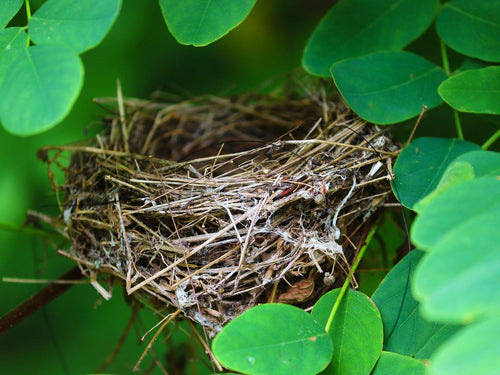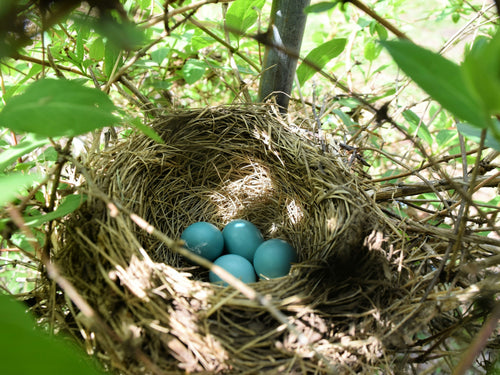12 Amazing Facts About Bird Eggs: Shapes, Colors & Survival Secrets
TTNatureTeam
Have you ever noticed a bird nest with small eggs in your backyard and wondered what bird laid these? Bird eggs, honestly, are little gems of nature. They come in all sorts of colors, shapes and sizes. Some of them could be blue, speckled, brownish, and some that are really small. And some are big enough to fit in your hand.
But what if we tell you that there’s more to how they look like? From how they’re shaped to how they protect the baby bird growing inside, each detail serves a purpose. Some birds lay eggs in other birds’ nests. Some eggs can delay hatching until the time is right. Let’s crack open each scientific fact about bird eggs and learn something new about our bird world.
1. Bird Eggs Come In Over 10,000 Varieties
According to IOC World Bird List, there are over 11,250 species of birds (including 164 extinct) flying around in this world. And pretty much all of them lay eggs. But there are several types of bird eggs and all are different.
Some are round-shaped, while others can be long and pointy. Their colors can be white, blue, pale pink, and even a few that look like candy (don’t eat them.)
The tiniest one, which is only found in Cuba, belongs to the hummingbird-it's just about the size of a coffee bean. And the biggest is from an ostrich that can weigh around 3 pounds(1.4kg). That's how much an average laptop weighs.
2. Why Do Some Birds Lay Blue Eggs?

Ever seen robins, blue jays, or eastern bluebird eggs? That blue shade comes from a natural pigment called biliverdin (say: bil-uh-ver-din). It’s the same pigment that makes bruises look greenish-blue sometimes. The more biliverdin in the shell, the more bluer the egg.
But it’s not just for the looks. Scientists believe that blue eggs might help control heat or protect the inside from harmful UV rays. Also, the color can blend in with the leaves and shadows becoming – a perfect camouflage from the predators.
3. Shapes Of Bird Eggs Help Keep Them Safe
Bird eggs aren’t always oval-shaped. Some are super pointy. Others look more like marbles.
Take the murre – for example – they lay very pointy eggs on rock cliffs. If one gets bumped, it rolls in a circle instead of falling off the cliff. Crafty right? Birds like chickens plovers that nest on the flat ground, lay rounder eggs – easier to balance and sit on many at once.
4. Bird Eggshells Change With Water And Climate

You might think that all eggshells are kind of the same but they aren’t. We know how the weather can be super dry or rainy in New Mexico. Well, birds living in that area can lay eggs that adjust to the climate.
A study of 16 years was conducted where scientists kept track of Western Bluebirds and Ash-throated Flycatchers:
· Eggs had thicker shells when the weather was hot and dry. Probably so the baby won’t lose much water inside.
· But in warm and wet years, the same birds laid thinner eggshells.
5. Can You Get Bird Flu From Eating Eggs?
The answer is: No, not if you cook them properly. According to the U.S. Department of Agriculture (USDA) and the Centers for Disease Control and Prevention (CDC), bird flu does not spread through well-cooked eggs.
Just make sure that you cook eggs until the egg white and yolk are firm. Also, avoid eating raw eggs. That’s a good rule even without bird flu around.
6. Some Birds Lay Eggs in Other Birds’ Nests
This might sound weird, but it’s true. Some birds don’t raise their own babies. This process is called brood parasitism (say: brood pair-uh-sit-izm).
That means they lay their eggs in another bird’s nest and let them do all the parenting. The brown-headed cowbird is a classic example. Even wilder – their eggs often mimic the color and pattern of the host bird eggs, so the trick mama doesn’t even notice.
7. What Animals Lay Eggs But Aren’t Birds?

We often think that only birds lay eggs. But that’s not true at all! Check out these animals that lay eggs:
· Platypus: It’s a mammal from Australia
· Echidna: Also a mammal that somewhat looks like a hedgehog
· Snakes and turtles: These reptiles lay eggs in sand or soil
· Frogs and salamanders: These amphibians lay soft almost jelly-like eggs in water
But birds are the only ones that lay hard shells made of calcium carbonate.
8. Baby Birds Can “Warn” Each Other Inside The Egg
This one is absolutely insane! A group of scientists studied yellow-legged gulls. They played predator alarm sounds to some of the eggs and let others alone quietly.
Eggs that heard the sound started vibrating, like tiny shakes. These eggs were placed back with the rest of the untouched eggs. And somehow without hearing the sounds – they still got the danger signal from their siblings.
And the result? All the eggs hatched late, stayed very quiet, crouched more, and had higher stress hormones.
9. Bird Eggs Have Tiny Holes To Help The Baby Breathe
If you look at an egg using a microscope you’ll find thousands of tiny holes. Those are called pores! These pores help oxygen pass through and carbon dioxide come out. That’s how the baby breathes while growing inside.
And no, the pores don’t make the shell weak. In fact, it protects the baby from bacteria and keeps the right amount of moisture inside.
10. Birds Turn Their Eggs Around For A Reason
Birds have often been seen moving or turning their eggs around. This is for the babies’ safety. Turning them often ensures that they receive the same amount of heat and oxygen.
Not only this, but it also prevents the embryos from sticking to the shell and their overall development. Some birds roll their eggs many times a day, while others might do that less.
11. Eggshells Get Thinner When Birds Are Exposed To Pollution

Pollution messes more than just air and water, it hurts birds too! When birds are exposed to harmful chemicals like DDT (or dichloro-diphenyl-trichloroethane) or other heavy metals in the air, their shells turn thin and fragile. It makes difficult for the baby to grow or hatch safely.
In 1972, DDT was completely banned in the U.S according to United States Environmental Protection Agency (EPA). It almost wiped out birds like bald eagles and peregrine falcons in North America. Many years after the ban, these species population came back to normal.
12. UV-Colored Eggs Help Birds See Better In Dark Nests
Scientists studied 98 species of European songbirds and discovered something shocking. Birds that lay eggs in dark spotting like tree holes, glow in Ultraviolet light. The reason? It helps parents to detect their eggs in low-lit areas.
In an experiment, scientists placed some fake bird eggs without UV reflection outside the spotless starlings’ nests. The bird parents mostly brought back UV-reflecting eggs into their nests. They could detect their eggs better.
And no, they didn’t throw non-UV ones as they normally would have because it was a parasitic egg. So, the UV eggs help birds keep track of their babies, even when it’s kinda dark where they live.
Conclusion
So, bird eggs aren’t just pretty, they are smart, strong, and have lots of secrets. Every detail on an egg has some reason behind it. Next time you find an egg abandoned, remember that a little life has waited so long inside to see this world – just like you.




